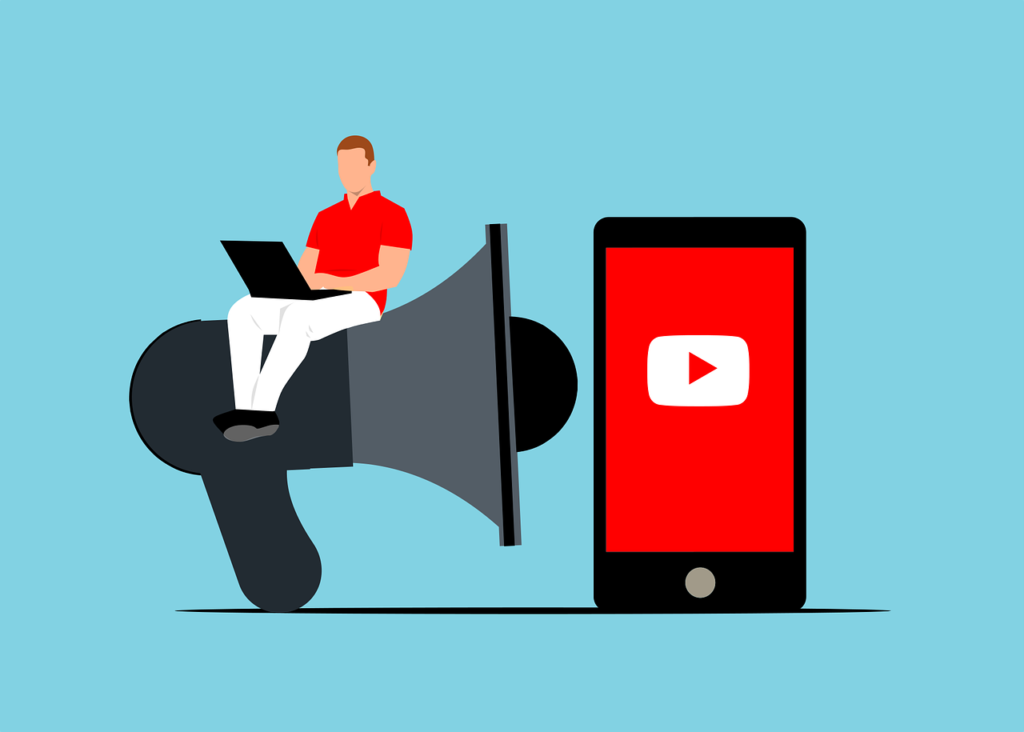Running a marketing blog can be a powerful tool for attracting and engaging your audience. However, coming up with fresh and engaging content ideas can be a challenge. This article will provide you with a wealth of content ideas that can keep your marketing blog vibrant and your readers coming back for more. Let’s dive into these actionable and strategic content ideas that can boost your blog’s engagement and effectiveness.
Industry Insights and Trends
Emerging Trends in Marketing
One of the best ways to establish your blog as a go-to resource is by covering emerging trends in the marketing world. Write about new technologies, platforms, and strategies that are gaining traction.
Discuss how these trends can impact businesses and offer tips on how to stay ahead of the curve. This type of content positions you as an industry leader and keeps your readers informed about the latest developments.
Expert Interviews
Interviewing industry experts can provide valuable insights and diverse perspectives for your readers. Reach out to influencers, thought leaders, and successful marketers and ask them to share their experiences, challenges, and advice.
These interviews can be in the form of written Q&As, video interviews, or podcast episodes. Featuring expert opinions adds credibility to your blog and can attract a wider audience.
Case Studies
Case studies are powerful tools for demonstrating the effectiveness of marketing strategies and tactics. Write detailed case studies about successful marketing campaigns, including your own or those of well-known brands.
Describe the goals, strategies, execution, and results in detail. Case studies provide practical insights and real-world examples that your readers can learn from and apply to their own efforts.
Actionable How-To Guides
Optimizing Your Website for SEO
A well-optimized website can significantly enhance your visibility and drive more organic traffic. Begin by conducting keyword research using tools like Google Keyword Planner or Ahrefs to identify relevant keywords for your industry.
Incorporate these keywords naturally into your website’s content, including titles, headings, meta descriptions, and image alt texts. Improve your site’s loading speed, ensure mobile-friendliness, and create a clear, user-friendly navigation structure.
Regularly update your content to keep it fresh and relevant, and use internal linking to guide visitors through your site.
Creating High-Converting Landing Pages
A well-designed landing page can significantly improve your conversion rates. Start with a clear, compelling headline that immediately communicates the value proposition.
Use high-quality images and concise, benefit-driven copy to engage visitors. Include a strong call-to-action (CTA) that directs users towards the desired action, whether it’s signing up for a newsletter, downloading a resource, or making a purchase.
Ensure your landing page is mobile-friendly and loads quickly. Test different elements such as headlines, images, and CTAs using A/B testing to identify what works best.
Step-by-Step Tutorials
Creating step-by-step tutorials on various marketing techniques can provide immense value to your readers. Cover topics like setting up a Google Ads campaign, optimizing a website for SEO, or crafting an effective email marketing strategy.
Break down each process into easy-to-follow steps, and include screenshots or videos to make the tutorials more comprehensible. Actionable guides help your readers implement what they learn and achieve tangible results.
Comprehensive Resource Lists
Curate comprehensive lists of tools, resources, and platforms that can help marketers achieve their goals. For example, you could create a list of the best social media management tools, content creation platforms, or analytics tools.
Provide brief descriptions and highlight the key features of each resource. Resource lists are highly shareable and can serve as valuable reference guides for your audience.
Problem-Solving Content
Identify common problems or challenges that marketers face and provide solutions. This could range from dealing with declining engagement rates on social media to optimizing conversion rates on landing pages.
Offer practical tips and strategies to overcome these issues. Problem-solving content resonates with readers because it addresses their pain points and offers actionable advice.
Crafting Effective Email Marketing Campaigns
Email marketing remains one of the most effective channels for engaging with your audience. Start by building a high-quality email list through lead magnets, sign-up forms, and social media promotions.
Segment your audience based on demographics, past behavior, and preferences to deliver personalized content. Design visually appealing emails with clear calls-to-action, using tools like Mailchimp or Constant Contact.
Test different subject lines, send times, and content formats to optimize your campaigns. Track key metrics such as open rates, click-through rates, and conversions to continuously refine your strategy.
Implementing a Retargeting Campaign
Retargeting campaigns can help you re-engage visitors who have shown interest but haven’t converted. Use platforms like Google Ads and Facebook Ads to create retargeting campaigns.
Segment your audience based on their behavior, such as pages visited or products viewed. Design ads that remind them of their interest, offering incentives like discounts or free trials to encourage conversion.
Ensure your ads are visually appealing and have a clear CTA. Monitor your campaign’s performance and adjust your targeting and creative elements as needed.
In-Depth Analysis and Commentary
Market Analysis
Conduct in-depth analysis of specific markets or industries and share your findings. This could involve examining market trends, consumer behavior, or competitive landscapes.
Use data and research to support your analysis and provide actionable insights. Market analysis posts can position your blog as a thought leader and attract readers interested in strategic insights.
Commentary on Industry News
Stay updated with the latest news and developments in the marketing world and share your commentary. Offer your perspective on significant events, such as major algorithm updates, industry mergers, or new regulations.
Explain how these developments could impact marketers and businesses. Timely commentary on industry news keeps your content relevant and engaging.
Data-Driven Insights
Use data to uncover trends, patterns, and insights that can benefit your readers. This could involve analyzing your own marketing data or using publicly available data sources.
Share your findings through detailed reports, infographics, or data visualizations. Data-driven insights add credibility to your content and provide valuable information that your readers can use to inform their strategies.
Personal Experiences and Lessons
Behind-the-Scenes Look
Give your readers a behind-the-scenes look at your marketing processes. Share how your team brainstorms ideas, executes campaigns, and analyzes results.
This transparency can humanize your brand and provide valuable insights into your workflow. Readers appreciate seeing the real effort and thought that goes into your marketing strategies.
Success Stories and Failures
Share stories of both your successes and failures in marketing. Discuss what worked, what didn’t, and what you learned from each experience.
These stories can be incredibly relatable and provide valuable lessons for your readers. Being open about your challenges and how you overcame them can build trust and authenticity.
Day-in-the-Life Posts
Write about a typical day in the life of a marketer or a member of your team. Highlight the tasks, challenges, and rewards that come with the job.
This type of content can be engaging and offer a personal touch that resonates with readers, especially those aspiring to enter the marketing field.
Creative Content Formats
Interactive Webinars
Hosting interactive webinars can be a powerful way to engage your audience and provide them with valuable insights. Plan webinars on relevant marketing topics where you can share your expertise, showcase case studies, and answer questions in real-time.
Use platforms like Zoom or GoToWebinar to facilitate these sessions. Promote your webinars through your blog, social media, and email newsletters to maximize attendance. Interactive webinars allow you to connect directly with your audience, build credibility, and gather feedback.
Virtual Reality (VR) Experiences
Virtual Reality is an innovative way to create immersive experiences for your audience. Develop VR content that allows users to engage with your products or services in a simulated environment.
For example, a virtual tour of your office, a walkthrough of your product’s features, or an interactive marketing tutorial. VR experiences can be particularly effective for showcasing complex products or creating memorable brand experiences. Promote your VR content through your blog and social media channels to attract a tech-savvy audience.
User-Generated Content Campaigns
Encouraging your audience to create content related to your brand can significantly increase engagement and reach. Launch user-generated content campaigns where customers share their experiences with your products or services.
Create a branded hashtag for social media and feature the best submissions on your blog and other marketing channels. User-generated content not only provides authentic testimonials but also fosters a sense of community and loyalty among your audience.
Podcasts and Audio Content
Starting a podcast can help you reach a wider audience and provide valuable content in an accessible format. Plan episodes around various marketing topics, interview industry experts, and share actionable tips and strategies.
Promote your podcast through your blog, social media, and email newsletters to attract listeners. Additionally, consider creating audio versions of your blog posts for those who prefer listening over reading. Audio content can enhance your content strategy and cater to different audience preferences.
Livestream Events
Livestreaming is an excellent way to engage with your audience in real-time and provide a dynamic content experience. Host livestream events on platforms like Facebook Live, Instagram Live, or YouTube Live.
These events can include product launches, Q&A sessions, behind-the-scenes tours, or live tutorials. Promote your livestreams in advance to build anticipation and ensure a good turnout. Livestreaming allows you to interact directly with your audience, answer their questions, and create a sense of immediacy and excitement.
Animated Explainer Videos
Animated explainer videos can simplify complex concepts and make your content more engaging. Create short, visually appealing animations that explain your products, services, or marketing strategies.
Use tools like Animaker or Vyond to produce high-quality animations. Share these videos on your blog, social media, and YouTube to reach a broader audience. Animated explainer videos can increase understanding and retention of your content while making it more enjoyable.
Interactive Quizzes and Assessments
Interactive quizzes and assessments can make your content more engaging and personalized. Develop quizzes that help your audience identify their marketing strengths, weaknesses, or preferences.
For example, “What’s Your Marketing Style?” or “How Effective is Your SEO Strategy?”. Use tools like Typeform or Quizlet to create these interactive elements. Promote the quizzes on your blog and social media channels, and use the results to provide personalized recommendations.
Quizzes can drive engagement, provide valuable insights, and keep your audience coming back for more.
Visual Storytelling with Infographics
Infographics are an effective way to present data and tell a story visually. Create infographics that highlight key statistics, trends, or step-by-step processes related to marketing.
Use design tools like Canva or Piktochart to produce professional-quality infographics. Share them on your blog, social media, and other marketing channels. Visual storytelling with infographics can make complex information more digestible and shareable, increasing the reach and impact of your content.
Behind-the-Scenes Content
Sharing behind-the-scenes content can humanize your brand and build a deeper connection with your audience. Create blog posts, videos, or photo series that showcase the inner workings of your business.
This could include team introductions, office tours, or insights into your creative process. Behind-the-scenes content can build transparency and trust, making your audience feel more connected to your brand.
Interactive eBooks and Whitepapers
Traditional eBooks and whitepapers are valuable resources, but making them interactive can enhance their appeal. Include interactive elements like clickable links, embedded videos, quizzes, and interactive infographics.
Use tools like Adobe InDesign or Beacon to create these interactive documents. Offer them as free downloads in exchange for email sign-ups to grow your subscriber list. Interactive eBooks and whitepapers provide a rich, engaging experience and can serve as powerful lead magnets.
Case Study Videos
Transform your written case studies into engaging video content. Create videos that highlight the success stories of your clients or customers, showcasing how your products or services helped them achieve their goals.
Include interviews, testimonials, and visual representations of the results. Share these videos on your blog, social media, and YouTube to maximize visibility. Case study videos can provide compelling social proof and demonstrate the value of your offerings.
Engaging Your Audience
Interactive Content
Create interactive content such as quizzes, polls, and surveys to engage your readers. Interactive content can make your blog more dynamic and encourage reader participation.
For example, you could create a quiz to help readers determine their marketing style or a survey to gather feedback on your content.
User-Generated Content
Encourage your readers to contribute to your blog. This could be in the form of guest posts, case studies, or testimonials.
Featuring user-generated content can provide fresh perspectives and foster a sense of community. It also shows that you value your readers’ insights and contributions.
Q&A Sessions
Host Q&A sessions where you answer questions from your readers. This can be done through blog posts, live videos, or social media.
Q&A sessions allow you to directly address your audience’s concerns and provide personalized advice. They also encourage interaction and engagement with your content.
Expanding Your Reach
Guest Blogging
Invite industry experts to write guest posts for your blog and offer to write for other reputable blogs in your niche.
Guest blogging can expose your content to a wider audience and build relationships with other influencers. Ensure that guest posts provide value and align with your blog’s focus.
Collaborations and Partnerships
Collaborate with other businesses, influencers, or bloggers on joint content projects. This could include co-authored articles, webinars, or special events.
Collaborations can introduce your blog to new audiences and add credibility through association with respected partners.
Contests and Giveaways
Run contests and giveaways to attract new readers and engage your existing audience. Offer prizes related to your niche, such as marketing tools or free consultations.
Promote your contests through your blog, social media, and email newsletters. Contests can boost your visibility and encourage sharing and participation.
Optimizing for SEO

Keyword Clustering
Keyword clustering is a strategic approach to SEO that involves grouping similar keywords into clusters and creating content that targets these groups. This helps in creating comprehensive content that ranks for multiple related search queries.
Start by conducting thorough keyword research using tools like Ahrefs, SEMrush, or Google Keyword Planner to identify relevant keywords. Group these keywords into clusters based on their relevance and search intent.
Create pillar content that targets the primary keywords and supporting content that targets the related keywords. Interlink these articles to enhance your site’s structure and improve your SEO.
Optimizing Content for Featured Snippets
Featured snippets are selected search results that appear at the top of Google’s search results page. They provide direct answers to user queries and can drive significant traffic to your site.
To optimize your content for featured snippets, identify common questions related to your keywords. Structure your content to provide clear, concise answers to these questions. Use lists, tables, and bullet points to format your answers, as these are commonly used in featured snippets.
Regularly update your content to keep it relevant and accurate.
Implementing Schema Markup
Schema markup is a form of microdata that helps search engines understand the content of your pages better. Implementing schema markup can enhance your search engine listings with rich snippets, such as star ratings, event dates, and product information.
Use Schema.org to identify the appropriate schema markup for your content. Implement it on your pages using JSON-LD, Microdata, or RDFa. Test your markup with Google’s Rich Results Test tool to ensure it is correctly implemented.
Schema markup can improve your click-through rates and provide a better search experience for users.
Enhancing Page Speed
Page speed is a critical factor for SEO and user experience. Slow-loading pages can lead to higher bounce rates and lower search engine rankings. To enhance page speed, start by analyzing your site with tools like Google PageSpeed Insights or GTmetrix.
Identify elements that are slowing down your site, such as large images, unnecessary plugins, or inefficient code. Optimize your images by compressing them without losing quality. Minimize HTTP requests by combining CSS and JavaScript files.
Enable browser caching and use a content delivery network (CDN) to improve load times. Regularly monitor your site’s performance and make necessary adjustments.
Mobile-First Optimization
With the majority of web traffic now coming from mobile devices, optimizing for mobile is essential for SEO. Ensure your site is mobile-friendly by using responsive design, which adjusts your site’s layout based on the device’s screen size.
Test your site’s mobile usability with Google’s Mobile-Friendly Test tool. Optimize your content for mobile users by using larger fonts, clear calls-to-action, and touch-friendly navigation. Additionally, consider the mobile user experience when designing your site, ensuring it is intuitive and easy to navigate.
Creating Long-Form Content
Long-form content tends to perform better in search engine rankings due to its comprehensive nature and ability to cover topics in depth. Aim to create articles that are at least 1,500 to 2,000 words long.
Focus on providing detailed, valuable information that answers your audience’s questions thoroughly. Use headings and subheadings to organize your content, making it easier to read and navigate. Incorporate visual elements like images, videos, and infographics to enhance engagement.
Long-form content can improve dwell time, reduce bounce rates, and increase the likelihood of earning backlinks.
Optimizing for Voice Search
Voice search is becoming increasingly popular with the rise of smart speakers and voice-activated assistants. To optimize for voice search, focus on natural language and conversational keywords.
People tend to use longer, more conversational phrases when using voice search compared to text search. Identify common questions your audience might ask and incorporate these into your content.
Use FAQ sections to address these questions directly. Additionally, ensure your site is mobile-friendly and loads quickly, as voice search is often conducted on mobile devices.
Building High-Quality Backlinks
Backlinks are crucial for SEO as they signal to search engines that your site is authoritative and trustworthy. Focus on building high-quality backlinks from reputable sources. Start by creating valuable, shareable content that others will want to link to.
Reach out to industry influencers and bloggers to share your content and request backlinks. Guest blogging on reputable sites in your niche can also help you earn backlinks. Use tools like Ahrefs or Moz to monitor your backlink profile and identify opportunities for new backlinks.
Optimizing Internal Linking
Internal linking helps search engines understand the structure of your site and the relationship between your pages. It also helps distribute link equity throughout your site.
Create a strategic internal linking plan by identifying key pages you want to rank higher and linking to them from other relevant pages on your site. Use descriptive anchor text that includes your target keywords.
Regularly audit your internal links to ensure they are functioning correctly and update them as needed. Effective internal linking can improve your site’s crawlability and boost your SEO.
Seasonal and Timely Content
Holiday Marketing Strategies
Write about effective marketing strategies for different holidays throughout the year. Provide tips on how businesses can capitalize on holiday seasons like Christmas, Halloween, Easter, and Valentine’s Day.
Discuss successful holiday campaigns from various brands and analyze what made them work. Seasonal content can drive traffic during specific times of the year and keep your blog relevant.
Industry Events and Conferences
Cover major industry events and conferences. Provide previews of what to expect, live coverage of the event, and post-event summaries.
Share insights from keynote speakers, trends discussed, and any important takeaways. This content can position your blog as a timely and relevant resource in the marketing industry.
Annual Trends and Predictions
At the beginning or end of the year, create posts that reflect on the past year’s marketing trends and make predictions for the upcoming year.
Analyze how marketing strategies evolved over the year and what new trends might emerge. This type of forward-looking content can attract readers interested in staying ahead of the curve.
Engaging Stories and Narratives
Brand Stories
Share the stories behind well-known brands and how they became successful. Highlight their marketing strategies, challenges they overcame, and key milestones in their journey.
Brand stories can provide inspiration and valuable lessons for your readers.
Customer Success Stories
Feature success stories from your customers or clients. Show how your products or services helped them achieve their goals. Include quotes, data, and visuals to make the stories compelling.
Customer success stories serve as powerful testimonials and can build trust with your audience.
Personal Anecdotes
Share personal anecdotes from your own experiences in the marketing field. Discuss the challenges you faced, the lessons you learned, and the victories you achieved.
Personal stories can make your content more relatable and engaging.
Educational and Informative Content
Marketing Fundamentals
Write about the basics of marketing for readers who are new to the field. Cover essential topics like market research, target audience identification, branding, and the marketing mix.
Providing foundational knowledge can attract beginners and establish your blog as a valuable resource.
Advanced Marketing Techniques
For more experienced readers, delve into advanced marketing techniques. Discuss strategies like account-based marketing, advanced SEO tactics, or sophisticated data analytics.
Providing content for different skill levels can broaden your audience and keep them engaged.
Industry Comparisons
Compare different marketing strategies, tools, or platforms. For example, you could compare the effectiveness of various social media platforms, email marketing services, or content management systems.
Provide pros and cons for each option and offer your recommendations. Comparative content can help readers make informed decisions.
Tools and Resources
Tool Reviews
Review marketing tools and software that can help your readers improve their strategies. Provide detailed evaluations, including the features, benefits, drawbacks, and pricing.
Tool reviews can guide your audience in choosing the best solutions for their needs.
How to Use Guides
Create comprehensive guides on how to use specific marketing tools. Include step-by-step instructions, screenshots, and practical tips.
For instance, you could write a guide on using Google Analytics to track website performance or how to set up an email marketing campaign with Mailchimp.
Resource Roundups
Compile lists of valuable resources such as ebooks, courses, blogs, and websites that can help marketers enhance their skills. Briefly describe each resource and explain why it’s worth checking out.
Resource roundups can provide your readers with valuable information and save them time in finding useful content.
Community and Interaction

Reader Surveys
Conduct surveys to understand your readers’ interests, challenges, and preferences. Share the results in a blog post and discuss any interesting findings.
Surveys can provide valuable insights into your audience and help you create more targeted content.
Ask Me Anything (AMA) Sessions
Host AMA sessions where readers can ask you questions about marketing. Answer their questions in a blog post, video, or live stream. AMAs can increase engagement and provide valuable information tailored to your readers’ needs.
Community Spotlights
Feature members of your community in your blog. Highlight their contributions, share their success stories, or interview them about their experiences.
Community spotlights can foster a sense of belonging and encourage more interaction with your blog.
Visual and Interactive Content
Infographics and Data Visualizations
Create infographics and data visualizations that simplify complex information. These can include marketing statistics, processes, and strategies. Visual content is easy to digest and highly shareable, which can drive more traffic to your blog.
Interactive Tools and Calculators
Develop interactive tools and calculators that provide value to your readers. For example, create a ROI calculator for marketing campaigns or a content calendar template.
Interactive tools can engage your audience and encourage them to spend more time on your blog.
Webinars and Live Streams
Host webinars and live streams on various marketing topics. Provide in-depth presentations, answer questions, and engage with your audience in real-time.
Promote these events through your blog, social media, and email newsletters to maximize participation.
Content Series and Campaigns
Themed Content Series
Develop a themed content series that delves deeply into a particular topic over several posts. This could be a series on “Mastering Social Media Marketing” where each post focuses on a different platform, strategy, or tool.
Themed series keep readers coming back for more and allow you to explore a topic in depth.
Campaign Case Studies
Document and analyze your own marketing campaigns from start to finish. Share the planning process, execution, challenges faced, and the results achieved. Include insights and lessons learned.
This transparency can provide real-world learning experiences for your readers and position you as an expert who practices what you preach.
Monthly or Quarterly Recaps
Write monthly or quarterly recaps of the major trends, news, and changes in the marketing world. Summarize key developments, their potential impacts, and your expert opinions.
Regular recaps keep your content timely and provide a valuable overview for your readers.
Engaging Multimedia Content
Interactive eBooks and Whitepapers
Create interactive eBooks and whitepapers that go beyond traditional formats. Include interactive elements like clickable links, embedded videos, quizzes, and infographics.
Offer these as downloads in exchange for email sign-ups to grow your subscriber list.
Animated Explainer Videos
Produce animated explainer videos to simplify complex marketing concepts. Animation can make your content more engaging and easier to understand.
Share these videos on your blog, social media, and YouTube to reach a broader audience.
Webinars and Workshops
Host educational webinars and workshops on various marketing topics. Provide detailed presentations, offer Q&A sessions, and engage with your audience in real-time.
Webinars can be recorded and repurposed as evergreen content for your blog.
Deep Dive Analytical Content
In-Depth Guides
Create comprehensive guides that cover every aspect of a particular marketing strategy or tool. These guides should be detailed, actionable, and well-researched.
For example, a complete guide to content marketing, from planning and creation to distribution and analysis.
Industry Benchmarks and Reports
Publish industry benchmarks and reports based on your own data or research. Analyze key metrics and trends, and provide actionable insights.
These reports can position your blog as a trusted source of industry knowledge and attract a professional audience.
Competitor Analysis
Conduct and share in-depth competitor analyses. Examine what your competitors are doing in terms of marketing strategies, content, and engagement.
Highlight their strengths and weaknesses, and offer takeaways that your readers can apply to their own efforts.
Community Engagement
Success Stories from Your Community
Share success stories from your community members. Highlight how they’ve implemented strategies from your blog and achieved significant results.
This not only provides social proof but also motivates other readers to take action.
Community Challenges
Organize community challenges that encourage your readers to implement specific marketing tactics. For example, a 30-day content creation challenge.
Share updates, progress, and success stories on your blog to keep the community engaged and motivated.
Interactive Content
Incorporate interactive content such as quizzes, surveys, and polls to engage your readers. For instance, a quiz to determine the best social media platform for their business or a survey to gather feedback on their biggest marketing challenges.
Share the results and insights in a follow-up blog post.
Expert Collaborations

Co-Authored Posts
Collaborate with industry experts to co-author blog posts. This can provide diverse perspectives and increase the credibility of your content.
It also allows you to tap into the co-author’s audience, expanding your reach.
Round-Up Posts
Create round-up posts that feature insights and tips from multiple experts on a specific topic. Ask each expert to contribute a short paragraph or tip, and compile them into a comprehensive post.
Round-up posts can attract traffic from the experts’ followers and provide varied insights for your readers.
Interviews and Profiles
Conduct and publish interviews with influential figures in the marketing industry. These can be in the form of written Q&As, podcasts, or video interviews. Focus on their career journeys, key achievements, and advice for aspiring marketers.
Interviews can provide valuable learning experiences and draw interest from a wider audience.
Educational Content
Tutorials and How-Tos
Write detailed tutorials and how-to guides that walk your readers through specific marketing tasks. Include screenshots, examples, and step-by-step instructions to make the content easy to follow.
Practical guides can empower your readers to take action and see results.
Glossaries and Jargon Busters
Create glossaries and jargon busters that explain common marketing terms and concepts. This can be particularly helpful for beginners who may be overwhelmed by industry terminology.
Clear explanations can make your content more accessible and user-friendly.
Study Guides and Cheat Sheets
Develop study guides and cheat sheets that summarize key marketing concepts and strategies. These can be useful resources for readers who want quick references.
Offer these as downloadable PDFs to grow your email subscriber list.
Wrapping it up
Optimizing your marketing blog for SEO is essential for driving organic traffic and improving your site’s visibility. By employing advanced strategies such as keyword clustering, optimizing for featured snippets, implementing schema markup, and enhancing page speed, you can significantly boost your search engine rankings.
Additionally, focusing on mobile-first optimization, creating long-form content, and optimizing for voice search ensures your blog meets the needs of modern users. Building high-quality backlinks, optimizing internal linking, and leveraging analytics and reporting will further enhance your SEO efforts. By strategically applying these tactics, startup founders can create a robust SEO foundation, attract a wider audience, and achieve long-term success.
Stay proactive, keep learning, and continuously refine your approach to stay ahead in the ever-evolving SEO landscape.
READ NEXT:
- Effective Mailing Strategies for Your Marketing Campaign
- How to Market Your Preschool Effectively
- Affordable Marketing Strategies for Small Businesses
- How to Market Your Yoga Studio
- Sweet Marketing Strategies to Grow Your Bakery






















Comments are closed.